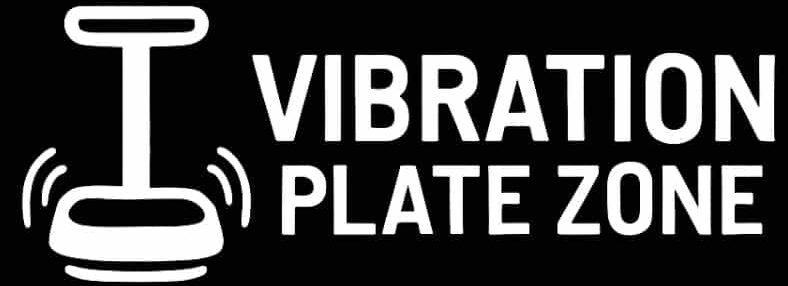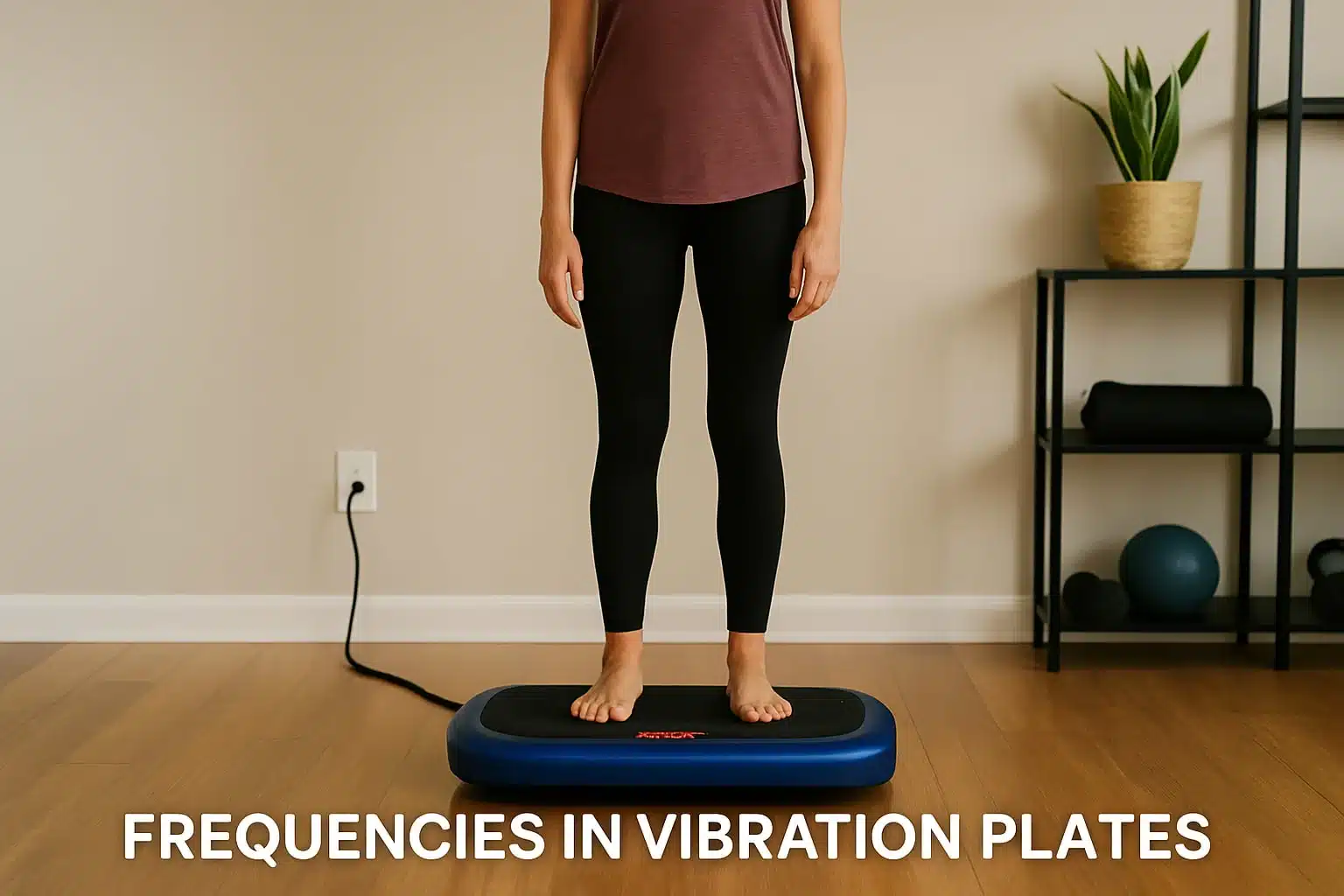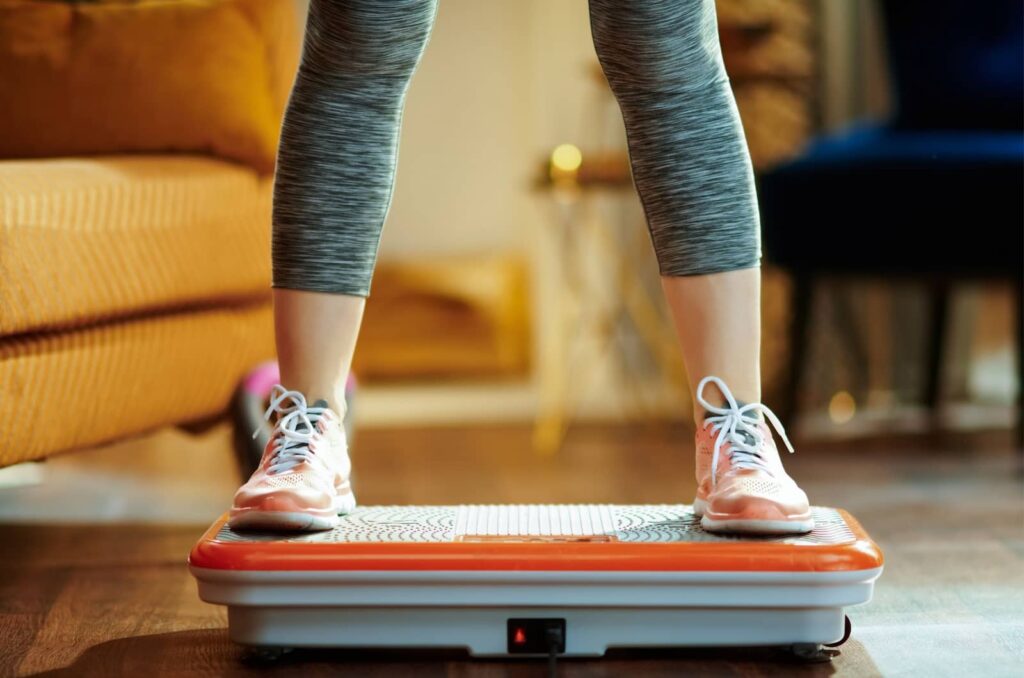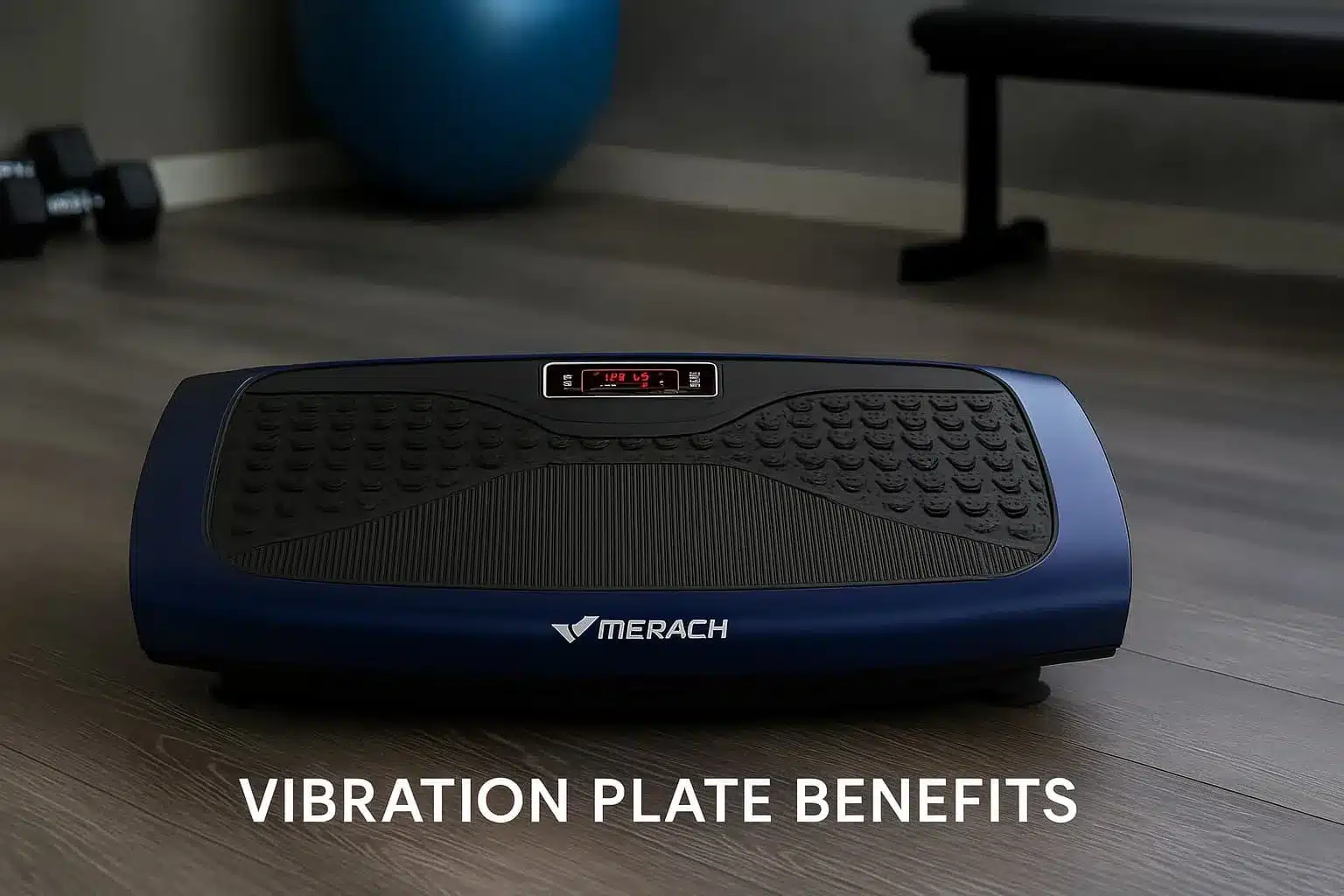Vibration plates have become popular in gyms and homes because they offer a compact way to train muscles, improve balance, and support recovery. One of the most important features of these machines is how quickly the platform moves up and down or side to side. That speed is measured in Hertz (Hz), or cycles per second. Understanding frequencies in vibration plates helps you tailor sessions to your goals, whether you’re aiming for gentle relaxation or intense strength work.
Knowing what the numbers on your vibration plate mean makes it easier to set up workouts that feel comfortable yet effective. A plate that moves ten times per second feels very different from one that vibrates thirty times per second.
The vibration frequency determines how your muscles react, how challenging the session feels, and what benefits you might gain. In this guide, I’ll break down the different frequency ranges, share how they affect your body, and offer tips on selecting the right settings for various goals.
Frequencies in Vibration Plates: What It Means
Frequency (Hz)
Oscillations per second. 10 Hz = ten cycles/sec; 30 Hz = thirty cycles/sec. Triggers the stretch reflex for rapid, involuntary contractions.
Amplitude & Direction
Amplitude indicates how far the plate moves; direction indicates oscillating or vertical pattern. A low Hz + high amplitude feels different from high Hz + low amplitude.
g-Force / Acceleration
A combined intensity marker influenced by both frequency and amplitude. Beginners should start at low to moderate levels and build gradually.
Low Frequencies (5–10 Hz)
Gentle, controllable oscillations for mobility, balance, relaxation, warm-up/cool-down, and rehab.
- Improved blood flow and gentle muscle activation
- Encourages active posture control and stabilizers
- Good entry point for joint-sensitive users
Medium Frequencies (12–20 Hz)
Reflexive contractions with some voluntary control are suitable for coordination, flexibility, and functional strength.
- Challenges stabilizers while larger muscles work
- High repetition effect without high impact
- Pairs well with mobility drills
High Frequencies (25–40 Hz)
Very rapid oscillations; muscles cannot fully relax. Maximizes fiber recruitment, power, and energy expenditure.
- Intense stimulus for strength, power, and endurance
- Short, focused bouts recommended
- Expect strong afterburn
Frequencies Above 40 Hz: Caution and Special Cases
Rare on consumer plates and used sparingly in pro settings. Keep intervals very short and maintain excellent control.
- May boost peak power in advanced drills
- Not necessary for most home users
- Follow the device manual and recommended limits
How to Apply
Low for mobility and recovery; Medium for functional strength and coordination; High for strength, power, and endurance. These settings complement, not replace, other training. Start lower and progress as you adapt.
Frequency refers to how many times the platform oscillates each second. A plate set at 10 Hz moves up and down ten times per second, while 30 Hz means thirty cycles per second. These oscillations trigger the stretch reflex, causing your muscles to contract rapidly and involuntarily. As a user, you feel the vibrations as a gentle hum or a strong shake depending on the setting.
Hertz values are only part of the equation. Amplitude, or how far the plate moves, and the direction of movement (oscillation versus vertical) also influence how intense a session feels. Many machines provide adjustable frequency and amplitude settings, so you can fine-tune workouts to your comfort level. A low frequency with a high amplitude feels different than a high frequency with a low amplitude. Understanding the interplay between these variables helps you choose settings that match your needs.
Some machines display g‑force or acceleration to give you a sense of overall intensity. Higher g‑forces mean greater mechanical stress on your body. Because both frequency and amplitude contribute to g‑force, adjusting one while keeping the other constant can change the training effect. Beginners often start with low to moderate frequencies and amplitudes, then gradually increase settings as they become comfortable.
For a thorough overview of how vibration plates work, including the science behind frequency and amplitude, you can read our guide on what is a vibration plate.
Low Frequencies: Mobility, Balance, and Relaxation
Frequencies in the range of about 5 Hz to 10 Hz are considered low. At this speed, the platform’s movement is relatively slow and gentle. Your muscles have enough time between each oscillation to voluntarily respond and maintain balance. This makes low frequencies ideal for mobility exercises, balance training, and general relaxation.
During low‑frequency sessions, you might perform gentle ankle pumps, mini squats, or weight shifts. The slower pace encourages you to actively control your posture and engage stabilizer muscles. Many users enjoy these settings as a way to warm up, cool down, or ease into vibration training. If you are new to vibration plates or have joint concerns, starting with low frequencies can help you get comfortable without feeling overwhelmed.
People who need gentle stimulation, such as older adults working on stability or those recovering from injury, often benefit from these lower settings. The slower oscillations can feel like a massage, promoting blood flow and helping muscles relax. While these sessions won’t provide intense strength gains, they offer value by improving proprioception (your awareness of body position) and reducing stiffness.
Medium Frequencies: Coordination and Muscle Function
The middle range of vibration frequencies spans roughly 12 Hz to 20 Hz. In this range, the vibrations are fast enough to trigger reflexive muscle contractions but slow enough to allow some voluntary control. These settings are well suited for improving coordination, flexibility, and muscle function. A plate vibrating at 15 Hz results in about nine hundred oscillations per minute. That adds up quickly, providing high repetition without the high impact of plyometric exercises.
Medium frequencies help you build a foundation of strength and balance. Vibration plate exercises such as bodyweight squats, lunges, and planks feel more challenging than they would on a stable floor. The constant adjustments you make to stay steady activate deeper stabilizer muscles along with larger muscle groups. Over time, this leads to better neuromuscular coordination.
Because the muscular contractions occur rapidly, medium frequencies can also support flexibility work. Stretching your hamstrings or hips on a plate set to around 15 Hz encourages muscles to relax into a stretch, potentially improving range of motion. People who feel tight after a run or long day of sitting often find relief at these settings.
High Frequencies: Strength, Power, and Body Shaping
When you set a vibration plate between about 25 Hz and 40 Hz, you enter the high-frequency range. Here, oscillations are so rapid that your muscles cannot fully relax between contractions. This produces a more intense workout that recruits more muscle fibers and increases the demand on your nervous system. High frequencies are popular for building muscle power, improving endurance, and shaping the body.
During high-frequency sessions, simple exercises become more demanding. A squat hold or a plank at 30 Hz will feel much harder than the same exercise on the ground. Your muscles work to stabilize you through every tiny displacement, so both superficial and deep muscle fibers are engaged. Research on whole body vibration suggests that around 30 Hz is particularly effective for enhancing lower-body strength and endurance in many populations.
Some athletes and advanced users work at even higher settings, approaching 36 Hz to 40 Hz. These frequencies require excellent control and are usually reserved for short bursts or specific power training drills. Most home users do not need to exceed 33 Hz, as the benefits plateau while the risk of fatigue or discomfort increases. Always adjust intensity gradually and pay attention to how your body feels during and after high‑frequency sessions.
Frequencies Above 40 Hz: Caution and Special Cases
Frequencies above about 40 Hz are rarely used in consumer vibration plates. At these speeds, the time between oscillations is extremely short, placing considerable stress on muscles and joints. Some high-end devices designed for professional athletes may offer settings up to 50 Hz, but users should proceed carefully. Experts note that high frequencies can increase peak power output in certain jumping or sprinting movements, but they are not necessary for most users.
Some safety guidelines suggest staying within a range of 20 Hz to 50 Hz, with many studies focusing on frequencies between 25 Hz and 45 Hz. This range strikes a balance between effectiveness and safety. Frequencies beyond about 70 Hz can be harmful, and consumer plates typically do not reach those speeds. Always consult your machine’s manual and follow recommended limits.
Choosing the Best Frequency for Your Goals

Selecting a vibration plate frequency depends on what you hope to achieve with your vibration plate. Knowing your goals helps you determine whether to stay in the low, medium, or high ranges. It’s also important to consider your current fitness level and any medical conditions.
If you are focused on balance and mobility, stay on the lower end of the spectrum. A gentle 8 Hz session paired with ankle raises or weight shifts supports ankle stability and body awareness. Those recovering from injury or managing chronic joint issues often start here. The low movement helps increase blood flow and relax muscles without causing fatigue.
For coordination and functional strength, frequencies around 15 Hz to 20 Hz work well. At this speed, you can perform dynamic exercises like bodyweight squats, lunges, or step-ups. The vibrations challenge your nervous system, forcing your muscles to fire rapidly while you maintain form. Consistent sessions in this range can improve joint stability and prepare your body for higher intensities later.
If your goal is muscle power or endurance, higher settings of 25 Hz to 35 Hz can deliver more intense stimulation. Squats, bridges, and push-up variations become significantly harder, promoting muscle growth and strength. Keep sessions short, around ten to fifteen minutes and focus on quality movement. It’s common to cycle between high-intensity drills and brief recovery periods to manage fatigue.
Those interested in vibration plates for weight loss should combine vibration sessions with other exercise and good nutrition. Higher frequencies increase muscle engagement, which raises energy expenditure during a session. Use frequencies in the mid-to-high range (20 Hz to 30 Hz) for compound movements like squats or planks, then incorporate cardio or resistance training off the platform. For product comparisons that consider weight loss goals, check out our guide to the best vibration plates for home use, which evaluates noise, size, and versatility.
EXAMPLE: Power Plate MOVE Frequencies and Usage Chart

Safe Frequency Range and Duration
While frequency is important, safety should always come first and the dangers of vibration machines should be considered. Most experts recommend keeping vibration sessions within a range of roughly 20 Hz to 70 Hz, but consumer plates typically max out around 40 Hz. Staying within these limits helps minimize potential side effects such as headaches, dizziness, or joint discomfort. If you experience any adverse sensations, lower the frequency or amplitude immediately and end your session.
Session duration is another factor. Beginners may start with five-minute sessions and gradually work up to fifteen minutes. Advanced users sometimes go longer, but most benefits occur within twenty minutes or less. Overusing a vibration plate can lead to fatigue and diminish returns, so it’s better to train consistently with shorter sessions than to overextend yourself occasionally.
People with medical conditions such as pregnancy, pacemakers, deep vein thrombosis, severe migraines, or recent surgical implants should consult a healthcare professional before using a vibration plate. If you’re unsure about safe use, start with very low frequencies and short sessions, then monitor how your body responds.
How Frequency Affects the Body: Research Highlights

Scientific studies have examined how different frequencies influence muscle strength, balance, and other outcomes. One randomized trial compared training at 30 Hz versus 50 Hz. Participants who trained at 30 Hz saw greater improvements in isometric and concentric knee extensor strength, while both groups improved in eccentric strength. This suggests that higher frequencies are not always better. The 30 Hz group achieved meaningful gains with fewer oscillations per second, highlighting the value of moderate frequencies.
A clinical review of whole body vibration noted that lower frequencies (around 20 Hz) are often recommended for rehabilitation and older adults, whereas frequencies around 30 Hz are effective for enhancing muscle endurance and strength in general populations. The same review observed that frequencies above 50 Hz do not provide additional benefits for most users and may increase the risk of adverse effects.
Other research has explored the effects of vibration on bone health. Most studies showing improvements in bone mineral density use frequencies between about 25 Hz and 45 Hz. Moderate frequencies help stimulate bone remodeling without causing excessive stress. High-frequency sessions at 50 Hz sometimes increase peak power in activities like jumping but do not necessarily lead to greater bone benefits.
These findings demonstrate the importance of choosing an appropriate frequency for your goals. Moderate settings often produce comparable or superior results to very high frequencies while being more comfortable and safer for continuous use.
Adjusting Frequency on Your Vibration Plate
Quality vibration plates vary in design, but many allow you to select specific frequencies or choose from preset programs. Understanding how to use a vibration plate and how to adjust the plate helps you make the most of its capabilities. Here are some guidelines and personal tips for tuning your machine:
- Check the manual: Each platform has its own range of available frequencies. Some machines, like the Power Plate MOVE, offer settings from 30 Hz to 40 Hz with multiple amplitude levels. Others have broader ranges starting as low as 5 Hz. Knowing your machine’s capabilities prevents you from accidentally selecting settings beyond its safe limits.
- Start slow: If you’re new to vibration training, begin with low frequencies and short sessions. This allows your body to acclimate to the sensation. Once comfortable, gradually increase the Hertz value or session length. Avoid making large jumps in intensity.
- Combine settings: Frequency works in tandem with amplitude. If you increase frequency, consider lowering amplitude to avoid overwhelming your body. Conversely, if you lower frequency, you can increase amplitude for a different kind of challenge. Experimenting with combinations helps you discover what feels most effective and comfortable.
- Use preset programs: Many plates come with built-in routines that cycle through different frequencies and amplitudes. These programs take the guesswork out of training. They can also help you experience how different settings feel before you start customizing workouts.
- Listen to your body: Pay attention to signals such as tingling, buzzing in your jaw, or headaches. These can indicate that the frequency or amplitude is too high. Reduce intensity and reassess. Always keep your knees slightly bent and maintain good posture to absorb vibrations through your muscles rather than your joints.
Adjusting your vibration plate can be an intuitive process once you understand the basics. For a look at how one premium model manages frequency control, read our Power Plate MOVE review, which covers its features and user experience in detail.
Power Plate MOVE has a very straightforward way of how the signaling lights equate to frequency and amplitude:
1 light = 30Hz Low amplitude of 2mm
2 lights = 35 Hz Low amplitude of 2mm
3 lights = 40Hz Low amplitude of 2 mm
4 lights = 30Hz High amplitude of 4mm
5 lights = 35 Hz High amplitude of 4mm
6 lights = 40Hz High amplitude of 4mm
Benefits at Various Frequencies: What to Expect

At different settings, vibration plates deliver different benefits. Knowing what to expect helps you design workouts that match your needs:
- Low-frequency benefits: Improved blood flow, gentle muscle activation, relaxation, and better balance. These settings are useful for warm-ups, cool-downs, or rehabilitation. Holding a simple squat at 8 Hz provides a mild challenge without fatigue. Stretching on the plate can help loosen tight muscles.
- Medium-frequency benefits: Enhanced coordination, functional strength, and flexibility. Frequencies around 15 Hz to 20 Hz support dynamic exercises such as lunges, step-ups, or light resistance band work. Sessions in this range feel like a moderate workout; you will sense your muscles working but you won’t be drained afterward.
- High-frequency benefits: Increased muscle activation, greater power output, and higher energy expenditure. Working at 30 Hz to 35 Hz intensifies static holds and compound movements. A plank or squat hold feels strenuous as your muscles contract rapidly to stabilize you. Short sessions are enough to feel significant fatigue and the afterburn effect.
These benefits complement rather than replace other forms of exercise. For instance, low frequencies can prepare you for a cardio session, medium frequencies can enhance functional fitness, and high frequencies can supplement strength training. Adjust frequency based on the workout phase and your recovery status.
Real‑World Tips for Using Frequency Settings
Over the years, I’ve integrated vibration plates into my own training and coaching programs. Here are some practical tips that have worked for me and my clients:
- Warm up and cool down: Use low frequencies (around 6 Hz to 10 Hz) for a few minutes before or after workouts. The gentle vibrations increase blood flow and help reduce stiffness. I often stand on the plate while doing arm circles or ankle pumps to wake up my muscles.
- Pair with bodyweight exercises: For strength work, choose mid-range frequencies (15 Hz to 25 Hz) and perform squats, lunges, push-ups, or bridges. The vibrations make these familiar moves more challenging without adding extra weight. If you have limited time, a ten-minute session can be surprisingly effective.
- Use intervals: Alternate between high-frequency holds and rest periods. For example, hold a squat or plank at 30 Hz for 30 seconds, then step off the plate to recover for a minute. Repeat for several rounds. This approach builds endurance and strength while managing fatigue.
- Incorporate recovery days: On days when you’re sore or fatigued, drop the frequency to 8 Hz to 12 Hz and do light movements like calf raises or gentle stretches. The vibrations help promote lymphatic drainage and reduce muscle soreness.
- Stay consistent: Frequency benefits accrue over time. Rather than doing occasional long sessions, aim for two or three shorter sessions per week. Consistency allows your muscles, bones, and nervous system to adapt safely and effectively.
Everyone’s response to vibration training is different. If you feel dizzy or uncomfortable at a certain setting, reduce the frequency or end the session. Always consult a healthcare professional if you have concerns about how vibration might interact with medical conditions or devices.
Wrapping It Up
Understanding frequencies in vibration plates empowers you to customize workouts and get the most out of this versatile tool. Low frequencies provide gentle stimulation for mobility, balance, and relaxation. Medium frequencies improve coordination and functional strength. High frequencies deliver intense muscle activation for power and endurance. Choosing the right frequency means considering your goals, listening to your body, and adjusting settings gradually.
Safety always comes first. Most home vibration plates operate within a range of about 20 Hz to 40 Hz, which balances effectiveness and comfort. Adjust frequency in tandem with amplitude and session duration to manage intensity. If you’re new to vibration training, start slowly and build up as your body adapts.
When selecting a machine, look for adjustable frequency settings, a sturdy platform, and clear controls. Many premium models, such as the Power Plate MOVE, offer precise frequency controls along with features like preset programs and multiple amplitude levels.
By choosing the right frequency and using your vibration plate consistently, you can enhance strength, balance, and recovery while keeping workouts short and enjoyable.
FAQs
What frequency should a vibration plate be set at?
The frequency a vibration plate should be set at depends on your goal. For gentle mobility and balance work, settings around 6 Hz to 12 Hz are ideal. If you’re working on strength and endurance, frequencies between 20 Hz and 30 Hz provide a more challenging stimulus. Always adjust based on how your body feels and increase gradually.
How many Hz is a vibration plate?
Most home vibration plates offer settings ranging from about 5 Hz up to 40 Hz. Lower settings are used for warm‑ups and recovery, while higher settings intensify exercises like squats or planks. Check your machine’s manual to see the exact range it supports.
Is higher frequency better for a vibration plate?
Higher frequency is not necessarily better for a vibration plate because the optimal setting varies with your goal and fitness level. Moderate frequencies around 30 Hz often produce strong strength and endurance benefits without excessive stress. Very high frequencies can increase intensity but may be uncomfortable or unnecessary for general use.
What is the best vibration plate frequency for weight loss?
The best vibration plate frequency for weight loss falls in the mid-to-high range of 20 Hz to 30 Hz. These settings increase muscle engagement and energy expenditure during exercises like squats or lunges. For effective weight management, pair vibration sessions with cardio, strength training, and a balanced diet.
What frequency is good for circulation on a vibration plate?
A frequency that is good for circulation on a vibration plate typically lies between 10 Hz and 20 Hz. These moderate settings encourage muscle pumping and blood flow without causing excessive fatigue. Standing or performing gentle movements on the plate at this speed can help promote circulation and support recovery.

About the author: Hello! I’m Vladimir Stanar, professor of physical education, kinesiotherapist, marathon runner, cyclist, and cycling coach, and long-time advocate of health, fitness, and active living.
My journey with vibration plates runs parallel to my professional career in education, sports medicine, and athletic development. Over time, I’ve come to see vibration plates as one of the most versatile tools for enhancing health, recovery, and performance.



